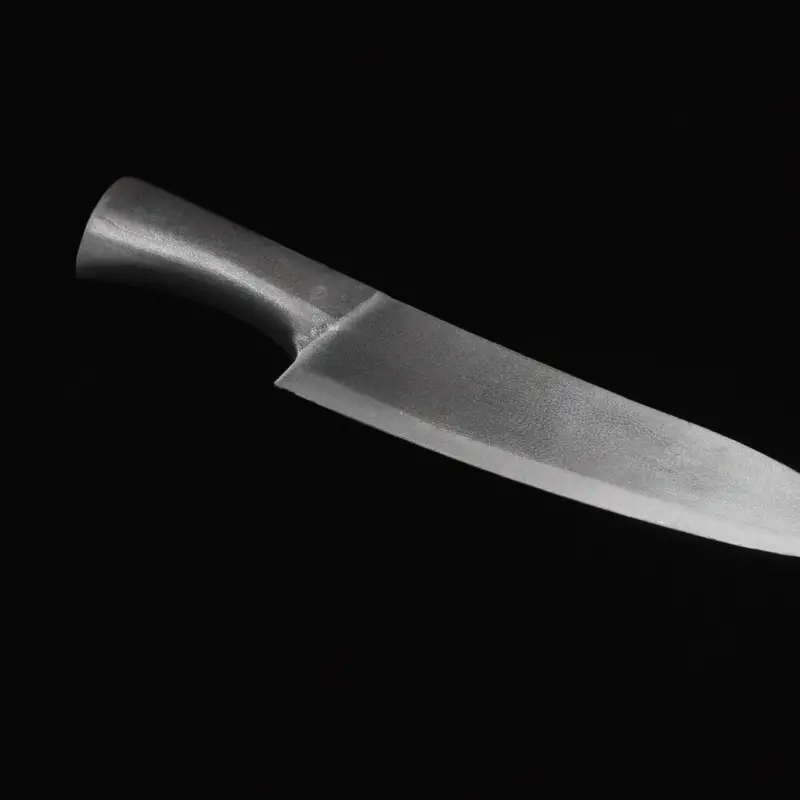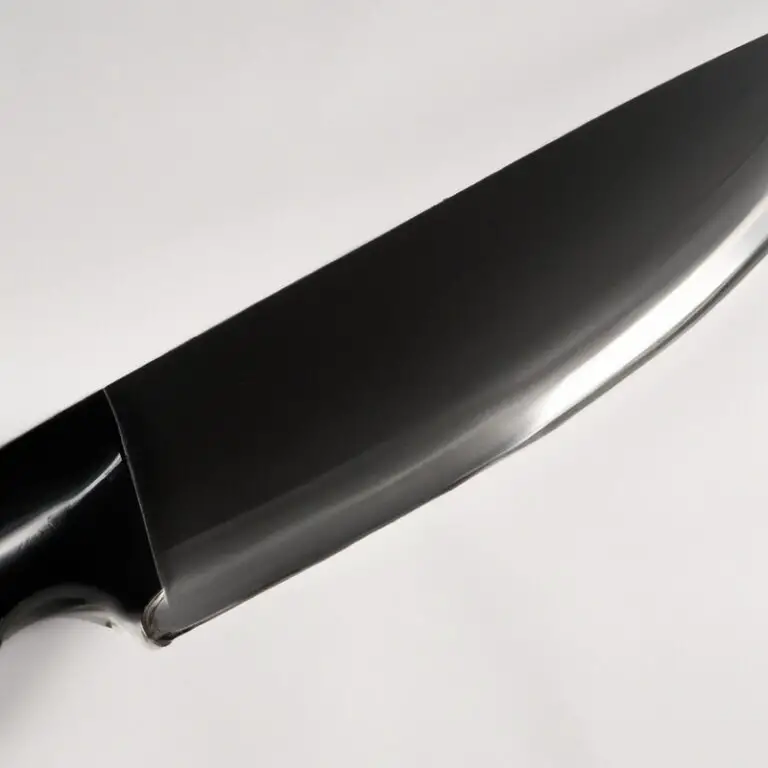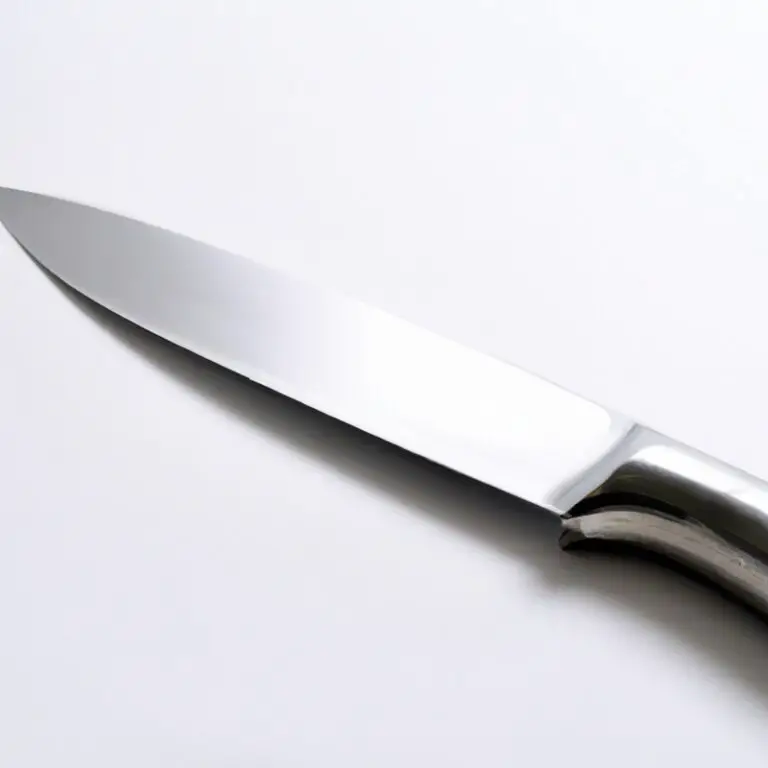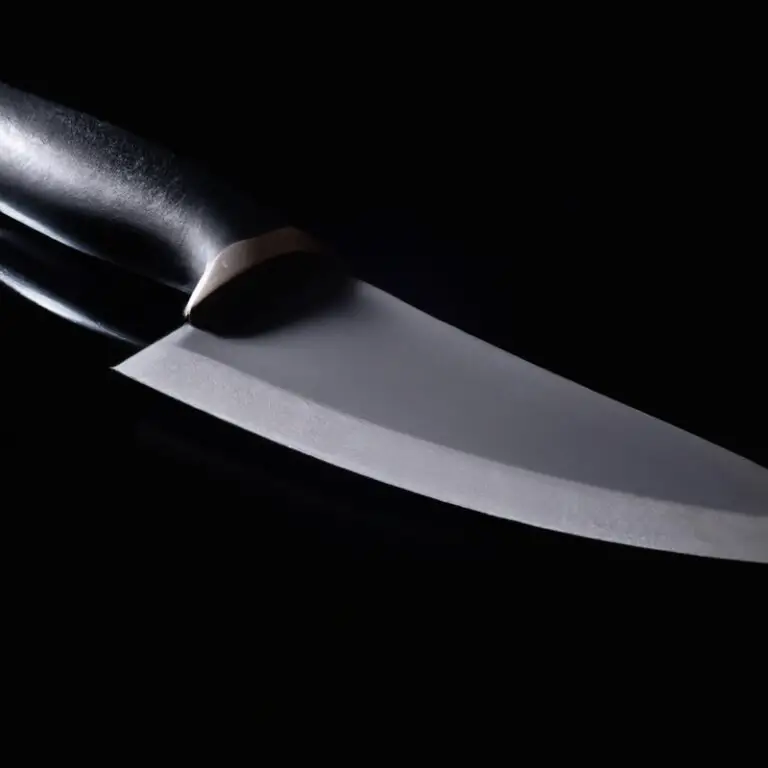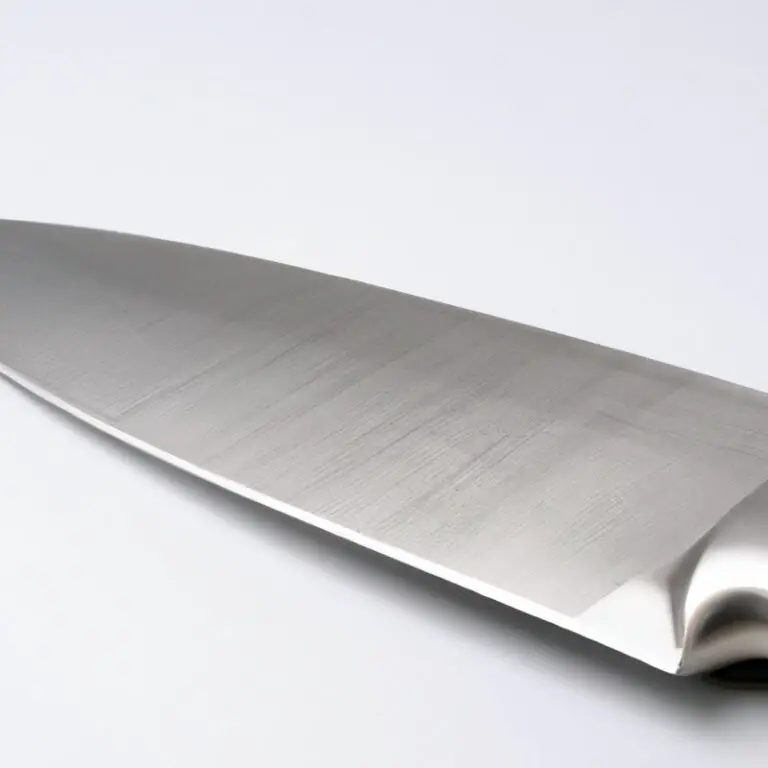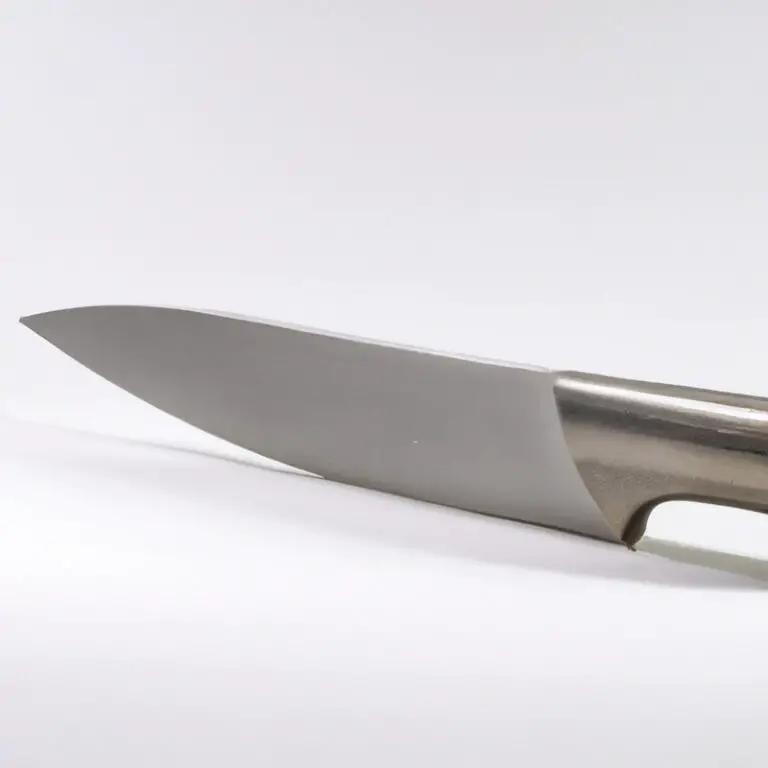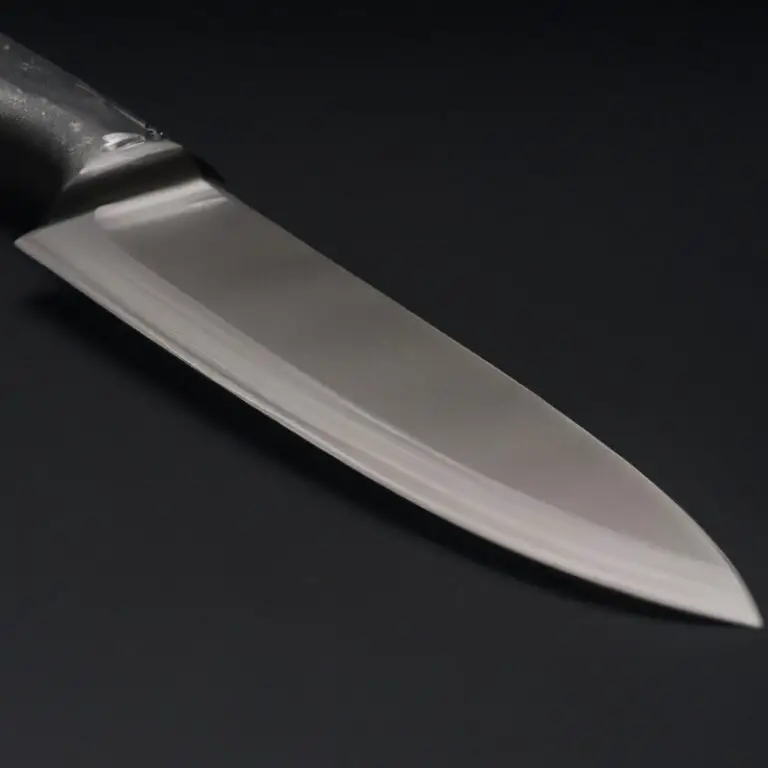How To Slice Meat Thinly With a Santoku Knife? Master It Now!
Key Takeaways:
- Use a sharp Santoku knife to achieve thin slices of meat for optimal cooking and presentation.
- Utilize a back-and-forth sawing motion with your knife to create consistent and precise cuts.
- Ensure proper hand placement and a stable cutting surface to avoid injury and obtain desired results.
- Practice and patience are key in mastering the art of thin slicing meat with a Santoku knife.
Slicing meat thinly with a Santoku knife can seem like a daunting task, but with the right technique and tools, it can be effortless and even enjoyable. As someone who enjoys cooking and taking on new challenges in the kitchen, I have become well-versed in the art of slicing meat with a Santoku knife.
In this article, I will be sharing my expertise on the subject so that you too can master the perfect thin slice.
From understanding the anatomy of the knife to choosing the right meat and applying the right pressure, I’ve got you covered. So, let’s dive in!
| Step | Description |
|---|---|
| Step 1 | Choose the right Santoku knife: a sharp knife with a narrow blade is ideal. |
| Step 2 | Freeze the meat: Put the meat in the freezer for 30 minutes so that it becomes firm. This makes it easier to slice the meat thinly. |
| Step 3 | Prepare the meat: Trim off any excess fat or unwanted parts from the meat. |
| Step 4 | Set the angle: Hold the Santoku knife at a 45-degree angle against the meat. |
| Step 5 | Start slicing: Slice the meat against the grain in one fluid motion, keeping the knife at a consistent angle. |
| Step 6 | Adjust the angle: Adjust the angle of the knife to slice at different thicknesses. |
Understanding a Santoku Knife: Learn the Anatomy and Design of the Knife
A Santoku knife is a Japanese-style all-purpose knife that translates to “three virtues”. It features a shorter and wider blade than a traditional Western chef’s knife, typically ranging from 5 to 8 inches.
The shape of the blade is flat with a slight curve towards the tip, allowing for a rocking motion for chopping and slicing.
The blade is typically made of high-quality steel, which is crucial for maintaining a sharp edge. The handle is often made of wood, plastic, or composite materials.
The design of a Santoku knife makes it a versatile tool in the kitchen, suitable for slicing, dicing, and mincing fruits, vegetables, and meats.
Its wide blade also allows for easy transfer of ingredients from cutting board to pan. Understanding the anatomy and design of a Santoku knife is essential for using it efficiently and effectively in the kitchen.
A sharp blade and comfortable handle are critical for safe and precise cutting.
Proper maintenance and care can prolong the lifespan of the knife and ensure consistent performance.
The Importance of a Sharp Blade: How to sharpen a Santoku Knife?
The importance of having a sharp blade in a Santoku knife cannot be overstated. A sharp blade not only makes slicing easier but also improves precision, control, and safety.
To keep your Santoku knife sharp, you can try sharpening it yourself using a sharpening stone or taking it to a professional sharpener.
Steps to sharpen your Santoku knife with a sharpening stone are as follows:
- Soak the sharpening stone in water for 10-15 minutes
- Hold the knife with one hand and angle the blade at 15-20 degrees to the stone
- Start with the rough side of the stone and move the blade back and forth, using light pressure
- Move to the finer side of the stone and repeat the same process
- Repeat the process on the other side of the blade
- Use a sharpening rod to hone the blade
Regular sharpening and honing will maintain the sharpness of the blade and extend the life of your Santoku knife.
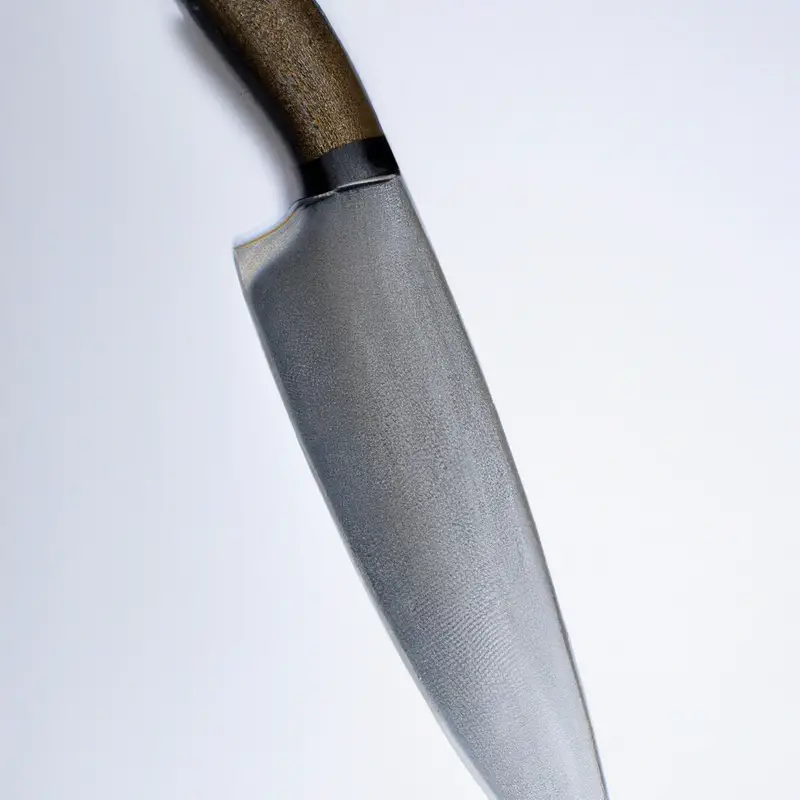
Choosing the Right Meat: Factors to Consider When Choosing Meat for Slicing
When it comes to choosing meat for slicing with a Santoku knife, there are a few factors to consider. Ideally, you want to select a cut of meat that is tender and has low connective tissue.
Cuts such as sirloin, tenderloin, and flank steak are great options.
Additionally, it’s crucial to choose meat that is chilled and firm, making it easier to achieve thin, even slices. Avoid using meat that is too fatty or tough, as it can make slicing difficult and result in uneven cuts.
When in doubt, ask your local butcher for advice on which cuts of meat are best for slicing thinly.
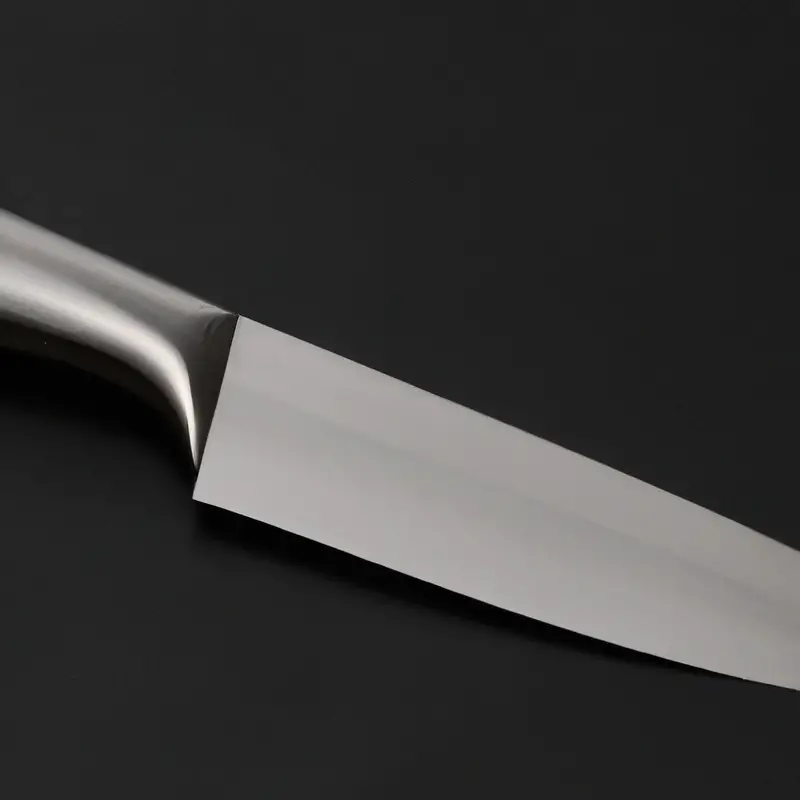
Prepping the Meat: How to properly prepare meat for thin slicing?
Before slicing meat thinly with a Santoku knife, it is essential to prep the meat properly. Here are some essential steps to follow:
- Chill the meat: For easier handling, chill the meat in the freezer for at least 20-30 minutes before slicing. This will solidify the meat’s surface and make it firmer, making it easier to handle and cut thin slices.
- Trim the fat: Trim any excess fat from the meat to give it a more uniform shape and reduce the risk of the knife’s slipping. It is also healthier as it can lower the overall fat content of the meat.
- Cut against the grain: Place the meat on a cutting board and cut against the grain for maximum tenderness. If the meat has long muscle fibers, cut against the grain to shorten the fibers, which makes them tender.
- Use a sharp knife: Use a Santoku knife that is sharp enough to cut the meat into thin slices without applying too much pressure. Dull knives can crush the meat and make it difficult to achieve even slices.
In summary, to prepare meat for thin slicing, chill it, trim the fat, cut against the grain, and use a sharp knife, especially a Santoku knife for precise and accurate slices.
The Perfect Angle: Ideal Angle for Slicing Meat with a Santoku Knife
The ideal angle for slicing meat with a Santoku knife is between 10 to 15 degrees. This angle allows the blade to smoothly glide through the meat with minimal resistance, resulting in thin and uniform slices.
To achieve this angle, hold the Santoku knife at a comfortable angle and make sure the sharp edge is in contact with the meat.
Always maintain a steady and controlled hand movement to prevent uneven cuts. Remember to keep the blade clean and sharpened regularly to achieve the best results while slicing meat with a Santoku knife.
Mastering the Technique: Step-by-Step Guide to Slice Meat Thinly with a Santoku Knife
Mastering the Technique: Step-by-Step Guide to Slice Meat Thinly with a Santoku Knife
- Begin by placing the meat on the cutting board and removing any excess fat or gristle.
- Hold the Santoku knife at a 45-degree angle to the meat, with the blade on the bottom and your fingers on top of the blade.
- Using a sawing motion, begin to slice the meat thinly against the grain.
- Apply consistent pressure with each pass of the knife, avoiding using too much force that might tear the meat.
- Continue to slice the meat, repositioning the knife and meat after each pass until it is as thin as you desire.
- Once finished, clean your knife and cutting board thoroughly.
By following these simple steps, you can master the technique of slicing meat thinly with a Santoku knife and achieve professional-grade results every time.
The Right Pressure: Applying the Right Amount of Pressure for Thin Slices
To achieve thin slices of meat with a Santoku knife, it is essential to apply the right amount of pressure. Too much pressure can result in uneven slices, while too little pressure produces thicker slices.
To apply the proper pressure, hold the knife at a 10-15 degree angle and let the weight of the knife do the work for you.
Avoid pressing down too hard on the knife and use a smooth gliding motion to slice through the meat. Take your time and make sure you’re comfortable with the pressure you’re applying.
With practice, you’ll be able to slice meat with a Santoku knife like a pro.
Safety First: Tips for Safe and Efficient Slicing with a Santoku Knife
When using a Santoku knife for slicing meat thinly, safety is paramount. Follow these tips to ensure safe and efficient slicing:
- Always use a cutting board to prevent accidents and protect countertops.
- Grip the handle of the knife firmly for better control and stability.
- Hold the meat steady with your other hand, keeping your fingers curled inward to avoid accidental cuts.
- Slice in a slow and steady motion, using the full length of the blade.
- Avoid applying too much pressure, as the knife can slip and result in injury.
- Keep the blade sharp for better control and precision.
- Store the knife properly in a safe place to prevent accidents.
By following these tips, you can slice meat with a Santoku knife safely and efficiently. Remember to always prioritize safety to prevent accidents and injuries.
Maintaining Your Santoku Knife: Best Practices for Caring Your Knife
To keep your Santoku knife in top condition, it’s essential to follow best practices for caring for your knife. Here are a few simple tips to help you maintain your Santoku knife:
- Clean it after each use – rinse the knife with warm water and use a mild detergent to clean it. Dry it thoroughly before storing it.
- Avoid dishwasher – Santoku knives shouldn’t be washed in the dishwasher as it may affect the blade’s sharpness and quality.
- Store it properly – Keep the knife in a protective case or on a knife block to prevent it from getting damaged.
- Sharpen it regularly – Invest in a good sharpening tool to keep your Santoku knife sharp. It’s important to sharpen the knife regularly as a dull blade can lead to an uneven cut and may damage the knife’s blade.
By following these maintenance practices, your Santoku knife will last longer and perform better, giving you the perfect thin slices each time you use it.
Exploring the Versatility: Other Cutting Techniques Using a Santoku Knife
Apart from slicing meat thinly, a Santoku knife is versatile for a variety of cutting techniques. Its design and sharpness make it ideal for other kitchen tasks such as chopping vegetables, dicing onions, mincing herbs, and slicing fruits.
The Santoku knife’s flat edge and sharp tip allow for precision and control, making it an excellent all-purpose knife in the kitchen.
Its lightweight and ergonomic design also make it comfortable to handle for extended periods. With the Santoku knife, you can explore and hone your cutting techniques to make your food preparation faster and more efficient.
Final Verdict
Mastering the art of slicing meat thinly with a santoku knife can seem daunting at first, but with the proper techniques and practices, you can achieve perfect results every time. By understanding the anatomy of your knife, selecting the right meat, and using the ideal angle and pressure, you can turn any cut of meat into a delicious, restaurant-quality meal.
Always prioritize safety and maintenance, and don’t forget to explore the versatility of your santoku knife for other cutting techniques.
With these tips and practices, you can confidently use your santoku knife to create culinary masterpieces for years to come. Practice makes perfect, so start honing your skills today!

